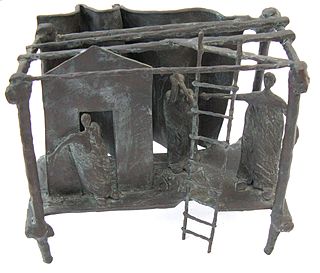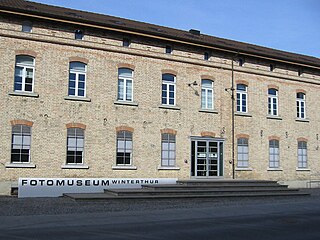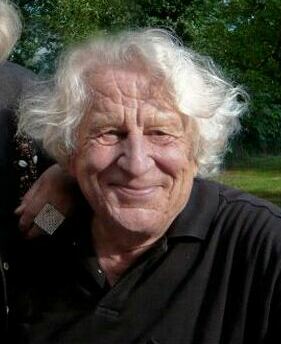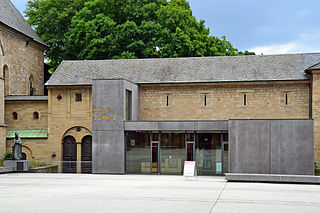External links
- Official website (in German)
The Museum im Bellpark is a forum for photography, history, and art in Kriens, Switzerland. It has existed since 1991.
The Museum maintains an archive that documents the development of Kriens from a village to an conurbation, and is building up a collection of Swiss drawings. Its focus is on photography, and it regularly organizes exhibitions. The Museum is supported by the Museum im Bellpark association.
The Museum im Bellpark maintains an archive with photographs by various photographers from Kriens:

The Deutscher Werkbund is a German association of artists, architects, designers and industrialists established in 1907. The Werkbund became an important element in the development of modern architecture and industrial design, particularly in the later creation of the Bauhaus school of design. Its initial purpose was to establish a partnership of product manufacturers with design professionals to improve the competitiveness of German companies in global markets. The Werkbund was less an artistic movement than a state-sponsored effort to integrate traditional crafts and industrial mass production techniques, to put Germany on a competitive footing with England and the United States. Its motto Vom Sofakissen zum Städtebau indicates its range of interest.

Lewis "Duke" Baltz was an American visual artist, photographer, and educator. He was an important figure in the New Topographics movement of the late 1970s. His best known work was monochrome photography of suburban landscapes and industrial parks which highlighted his commentary of void within the "American Dream".

Euskirchen is a town in North Rhine-Westphalia, Germany, capital of the district Euskirchen. While Euskirchen resembles a modern shopping town, it also has a history dating back over 700 years, having been granted town status in 1302. As of December 2007, it had a population of 55,446. Its local football club is called TSC Euskirchen.

Günther Förg was a German painter, graphic designer, sculptor and photographer. His abstract style was influenced by American abstract painting.

Arnold Odermatt was a Swiss police photographer whose work spanned more than 40 years. Originally trained as a baker, he was a photographer for the Nidwalden cantonal police from 1948 until his retirement in 1990. He is best known for his eerily beautiful black and white photographs of the aftermaths of motor vehicle accidents. Odermatt joined the police in 1948 and rose to become a lieutenant, chief of the transport police, and deputy chief inspector of the Nidwalden Police before he retired.

The Museum of Design, Zürich is a museum for industrial design, visual communication, architecture, and craft in Zurich, Switzerland.

Elke Rehder is a German artist living in Barsbüttel Germany.

Fotomuseum Winterthur is a museum of photography in Winterthur, Switzerland.

Fred Mayer was a Swiss/German photographer. His works included photographs for several news agencies such as ATP, DPA, ADP, UPI and Magnum Photos, as well as various portfolios. He further published several books, many in cooperation with his wife, Ilse Günther.

Hünegg Castle is a castle in the municipality of Hilterfingen of the Canton of Bern in Switzerland. It is a Swiss heritage site of national significance.

The Essen Cathedral Treasury is one of the most significant collections of religious artworks in Germany. A great number of items of treasure are accessible to the public in the treasury chamber of Essen Minster. The cathedral chapter manages the treasury chamber, not as a museum as in some places, but as the place in which liturgical implements and objects are kept, which continued to be used to this day in the service of God, so far as their conservation requirements allow.
Hans Danuser is a Swiss artist and photographer. His first major work, the cycle In Vivo, brought him international fame, therein he broke several societal taboos with respect to genetic research and nuclear physics. Since the 1990s, in addition to his photographic studies, Danuser has focused increasingly on transdisciplinary (research) projects in the arts and sciences.
Sabine Hornig is a German visual artist and photographer who lives and works in Berlin. Her work in photography, sculpture, and site-specific installation art is known for her interpretations of modernist architecture and contemporary urban life. Her work has appeared in solo exhibitions throughout the world, including Double Transparency at Art Unlimited Basel in Switzerland (2014) and Projects 78 at the Museum of Modern Art in New York (2003), and in numerous group exhibitions at institutions like the J.Paul Getty Museum in Los Angeles and ICA London.

Dr. Emil Mayer was an Austrian photographer, lawyer, inventor, and businessperson.
Johann Wilhelm Weimar, known as Wilhelm Weimar, was a German museum scientist, draftsman, typographer and photographer.

René Groebli, sometimes spelt Gröbli, is an exhibiting and published Swiss industrial and advertising photographer, expert in dye transfer and colour lithography.
Ernst Brunner was a Swiss documentary and ethnographic photographer.

Peter Keetman was a German photographer.
Gottfried Jäger is a German photographer, photo-theorist and former university teacher.

Thomas Kellner is a German fine-art photographer, lecturer and curator. He became known above all for his large-format photographs of famous architectural monuments, which, through many individual images and a shifted camera perspective, look like "photo mosaics".